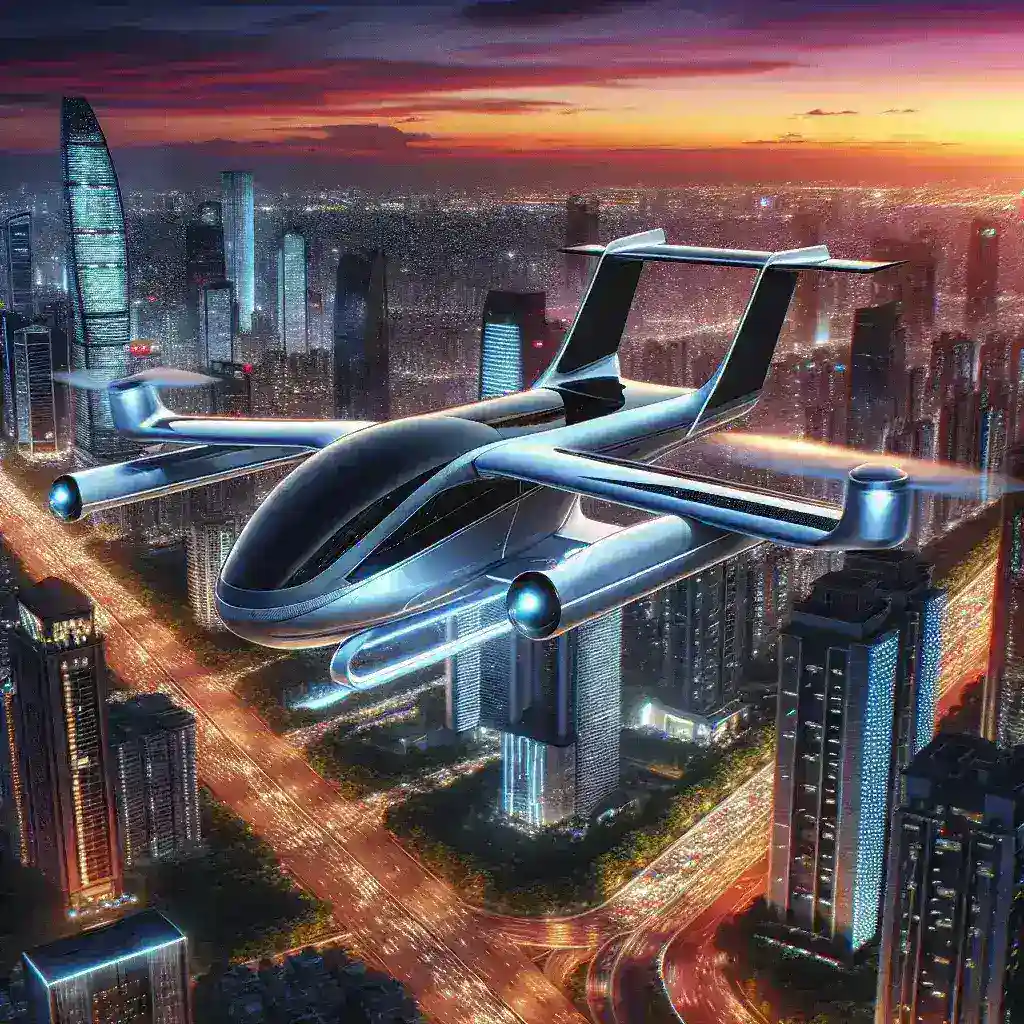Introduction
In a significant move towards revolutionizing urban air transportation, Uber has announced its partnership with Hyundai to develop advanced electric Vertical Take-Off and Landing (eVTOL) aircraft. This collaboration marks a pivotal step forward in the burgeoning field of urban air mobility, setting the stage for a future where aerial transport becomes a commonplace solution for congested city landscapes.
The Vision of Urban Air Mobility
Urban air mobility (UAM) represents a transformative shift in how we think about public and private transportation. With increasing urbanization, cities around the world are grappling with congested roadways and pollution. UAM aims to alleviate these challenges by utilizing airspace for daily commutes, thereby reducing travel time and environmental impact.
What is eVTOL?
eVTOL refers to a new class of aircraft designed to take off and land vertically using electric propulsion. These aircraft are not only more environmentally friendly compared to traditional helicopters but are also designed to be quieter and more efficient. The development of eVTOL technology is crucial to making urban air mobility a viable option for daily transportation.
Understanding the Partnership
The collaboration between Uber and Hyundai is more than just a business arrangement; it symbolizes a shared vision for the future of urban transport. While Uber brings its extensive experience in ride-sharing and technology, Hyundai contributes its expertise in automotive manufacturing and innovation.
The Goals of the Partnership
- Developing Efficient Aircraft: The primary aim is to create an eVTOL aircraft that is safe, efficient, and cost-effective for urban use.
- Regulatory Compliance: Both companies are committed to working with regulatory bodies to ensure that their aircraft meet safety and operational standards.
- Integrating with Existing Infrastructure: The partnership aims to integrate the eVTOL aircraft into existing transportation networks, providing seamless travel solutions.
Historical Context of Urban Air Mobility
The concept of urban air mobility is not new; it has been a part of science fiction for decades. However, recent technological advancements have made this vision more achievable. With the advent of electric propulsion systems, drone technology, and advanced materials, companies like Uber and Hyundai are now in a position to turn this dream into reality.
Previous Attempts and Failures
While many companies have attempted to develop urban air mobility solutions, several challenges have hindered their progress, including regulatory hurdles, safety concerns, and technological limitations. However, with the combined efforts of Uber and Hyundai, there is a renewed optimism in the potential of eVTOL aircraft.
How eVTOL Aircraft Will Work
The eVTOL aircraft developed through this partnership is expected to operate similarly to traditional ride-hailing services. Users will request a ride via an app, and the aircraft will arrive at designated vertiports to pick them up. This will significantly reduce travel time, especially in congested urban areas.
Technological Innovations
Both companies are focusing on various technological innovations, such as:
- Safety Features: Ensuring that the aircraft are equipped with multiple redundancies to enhance safety during flights.
- Battery Technology: Investing in advanced battery technologies that enable longer flight ranges and reduce charging times.
- Autonomous Systems: Exploring the integration of autonomous flying capabilities to enhance efficiency and safety.
Future Predictions for Urban Air Mobility
As the partnership progresses, experts predict that urban air mobility could become mainstream within the next decade. The implementation of eVTOL aircraft could lead to:
- Reduced Congestion: By taking to the skies, eVTOL aircraft could significantly reduce traffic congestion on the ground.
- Lower Emissions: With electric propulsion, these aircraft are expected to produce considerably lower emissions compared to traditional transport.
- Economic Opportunities: The development and implementation of eVTOL networks will likely create numerous jobs in various sectors.
Pros and Cons of eVTOL Aircraft
Benefits
- Time Efficiency: By bypassing ground traffic, eVTOL aircraft can drastically reduce travel times.
- Environmental Impact: As they are powered by electricity, they contribute to lower carbon emissions.
- Advanced Safety Measures: Ongoing technological advancements promise to make eVTOL aircraft safer than traditional air and ground transport.
Challenges
- Regulatory Issues: The integration of eVTOL into existing airspace will require extensive regulatory frameworks.
- Public Acceptance: Gaining public trust in the safety and reliability of eVTOL transport is essential for widespread adoption.
- Infrastructure Development: The need for vertiports and charging stations poses logistical challenges.
Real-World Examples
Various other companies are also venturing into the eVTOL space. For instance, companies like Joby Aviation and Archer Aviation are making strides in developing their own urban air mobility solutions, indicating a growing interest and investment in this sector.
Cultural Relevance
The idea of flying cars has long been a part of popular culture, from movies to literature. As we edge closer to making this a reality, it reflects society’s desire for innovation and the pursuit of efficiency. The partnership between Uber and Hyundai is not just a business venture; it is a cultural milestone that showcases human ingenuity.
Conclusion
The partnership between Uber and Hyundai on advanced eVTOL aircraft is a groundbreaking step towards the future of urban air mobility. As cities continue to grapple with congestion and pollution, innovative solutions like eVTOL offer promising avenues for a more efficient and sustainable future. With continued collaboration, investment, and technological advancements, the sky may soon no longer be the limit.
